After having good four weeks of exploration in fabric manipulation, here are my long waited final results!
I created three final samples, combining the previous work and producing some new pieces, using the techniques I learned.
Final sample I. Weave, mola work, machine and hand stitch.
 Work progress:
Work progress:

After cutting up the mola work sample in two parts, I pleated the fabric in order to represent my design studies better. The oval shapes, representing musical notes, now are closer together, to represent transition, and visual graphics, seen on the partiture. The pleats gave some volume as well. I decided to flip one part of mola work upside down, in order to show the entangled thread. If you have been following my blog, the thread entangled on the wrong side of my sample because the tension of my sewing machine wasn’t correct.
I spent quite a bit of time deciding how to combine pieces. I wanted to add the darning sample which I also cut up. After fiddling about I chose to leave the darn sample out of the final piece, looked a little too messy. Considering that the weave piece was already pretty busy.
Mola work and weave piece, both were a little unstable, really flexible, therefore I decided to join them together using sewing machine. I used a free hand stitch. After sewing there was a good layer of thread there, that gave extra texture and secured both pieces together.
All together I really like this sample. It’s at the same time quite messy but also elegant. Different fabrics work very well together. Fragments of wool and hessian fabric balances well with light polyester tulle. The same as thick hand stitches with lighter machine ones.
Have a closer look:
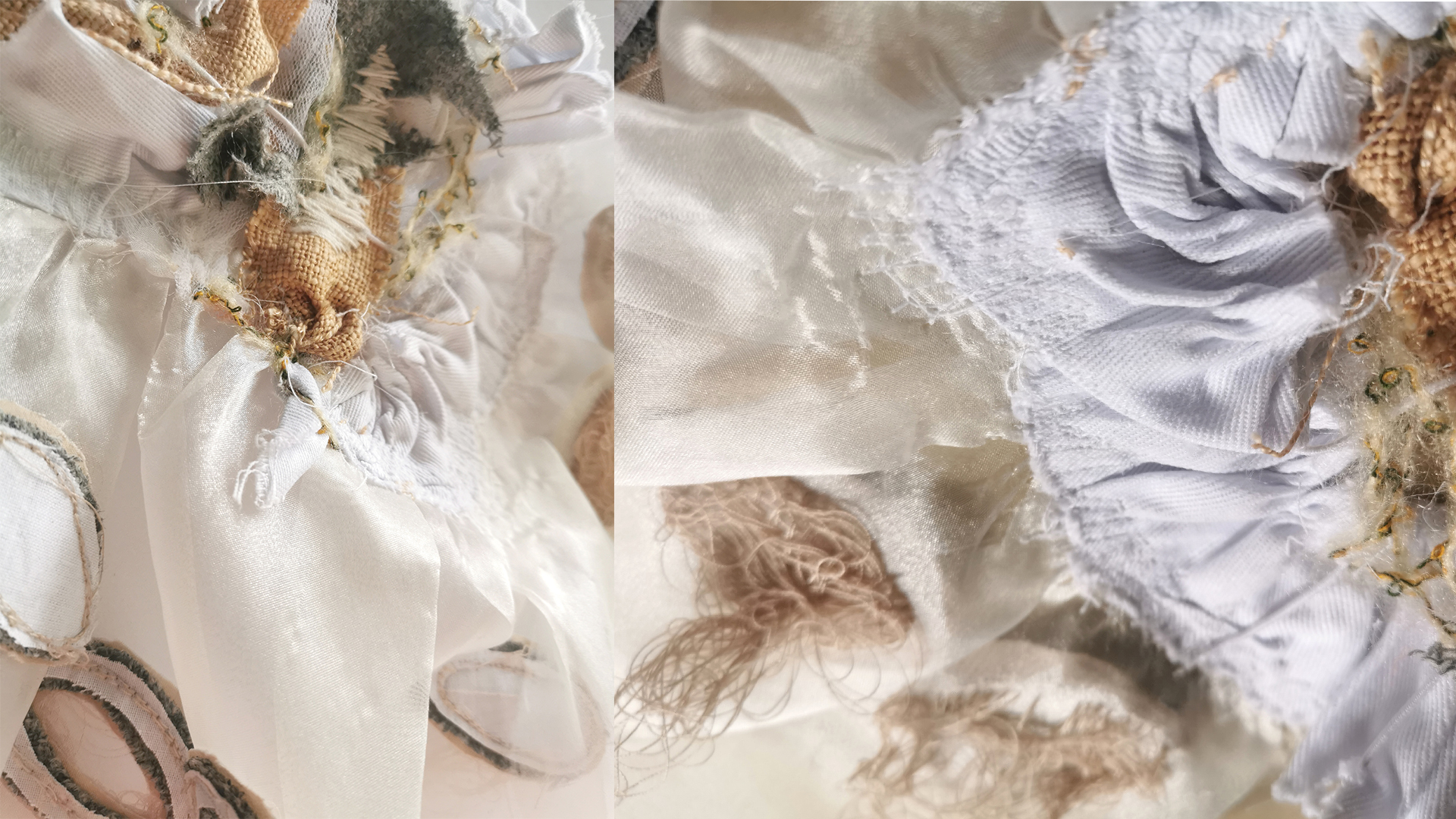
I usually work in the direction of fashion. I was placing my samples on the tailors dummy to see if they would look good as a piece of a garment. My first final sample would be great shoulder piece.
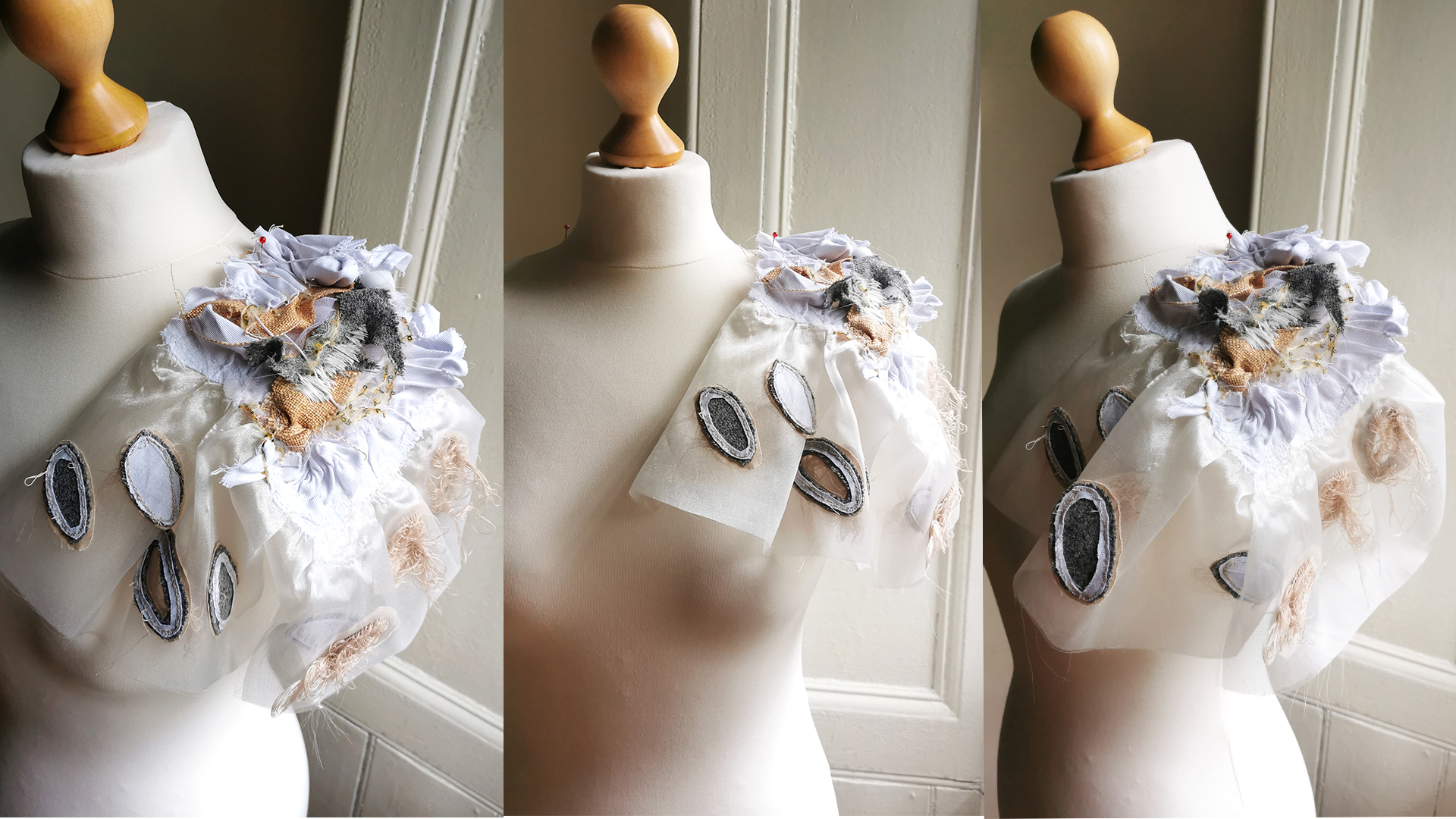
Final sample II. Weave, hand and machine stitch, padding.
 Have a closer look:
Have a closer look:
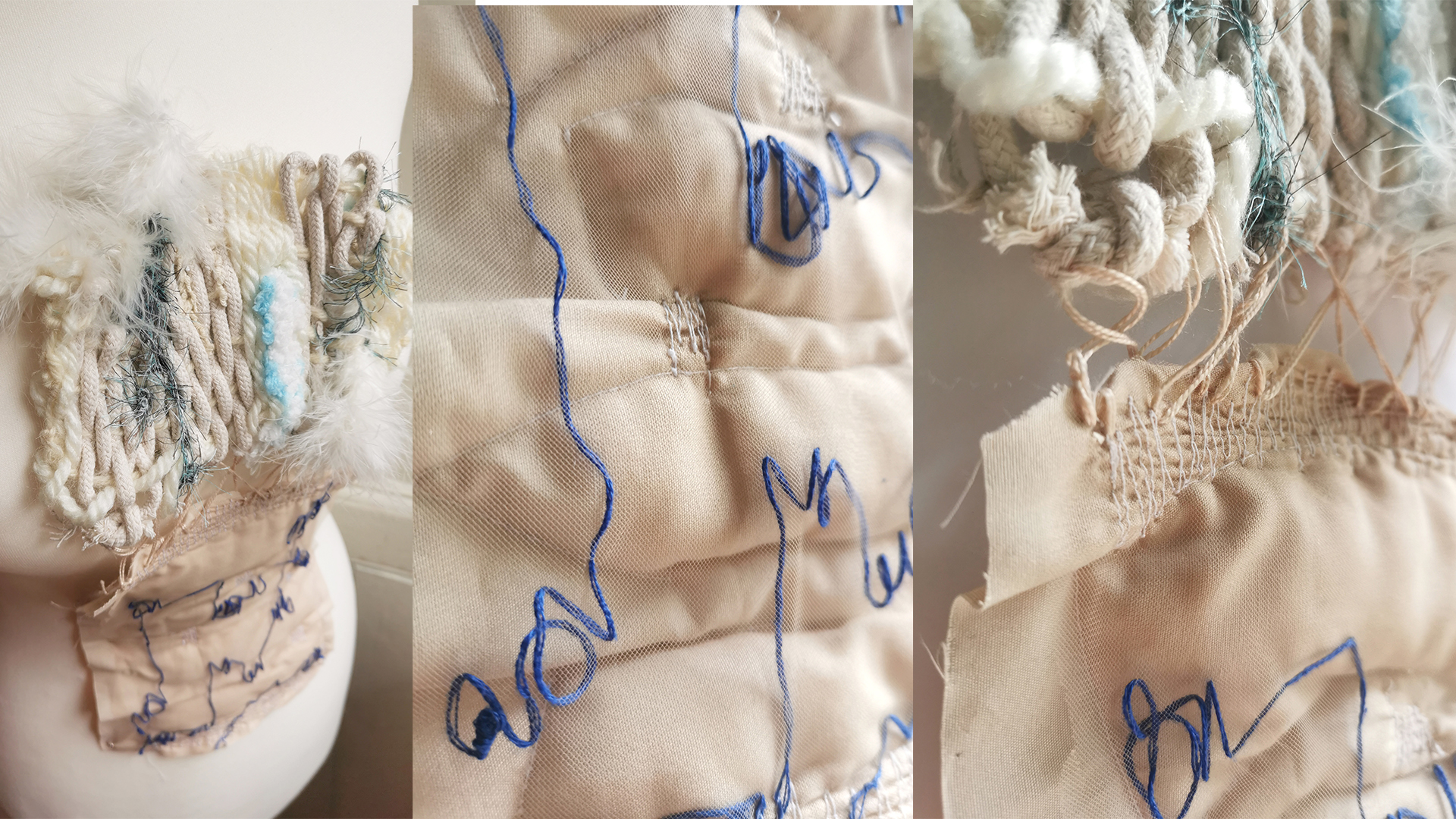
Both samples are described in detail in my previous posts. I joined them with stylised blanket stitch, using light thread. I chose to joined these particular samples together because they resembled each other in colour and weight. Both pieces represent different sections of one of my design studies.
At the beginning I was afraid that two samples will not look good together because they are quite different, yet both quite heavy and thick in texture. But I took a risk. Even tho this sample is maybe my least favourite, I believe it is good to go out of your comfort zone sometimes! Plus it clearly represents my data analysis!
This could become a front panel of a top:
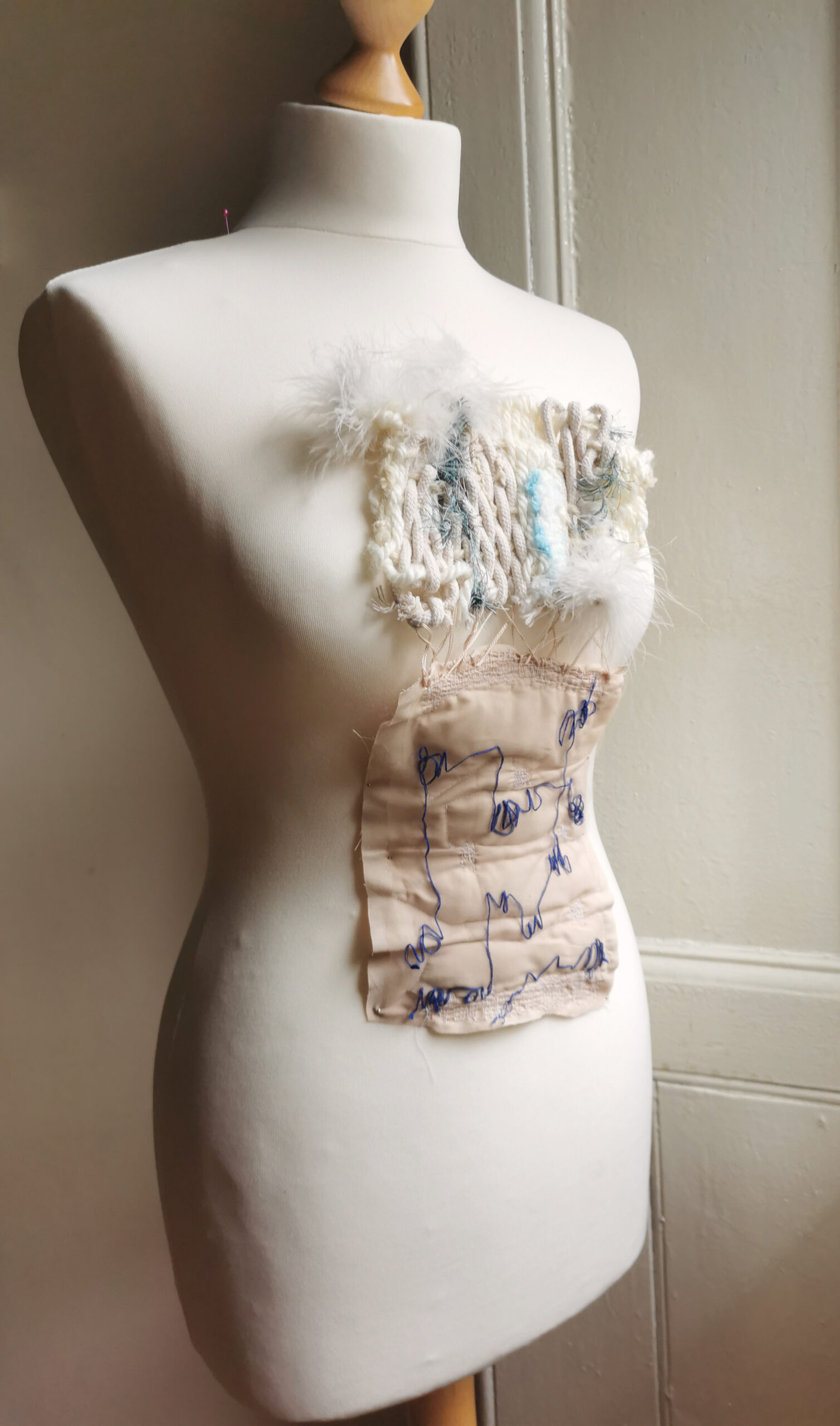
Final sample III. Crochet, knit, patchwork, hand stitch.
 And here is my favourite piece!
And here is my favourite piece!
Work process:
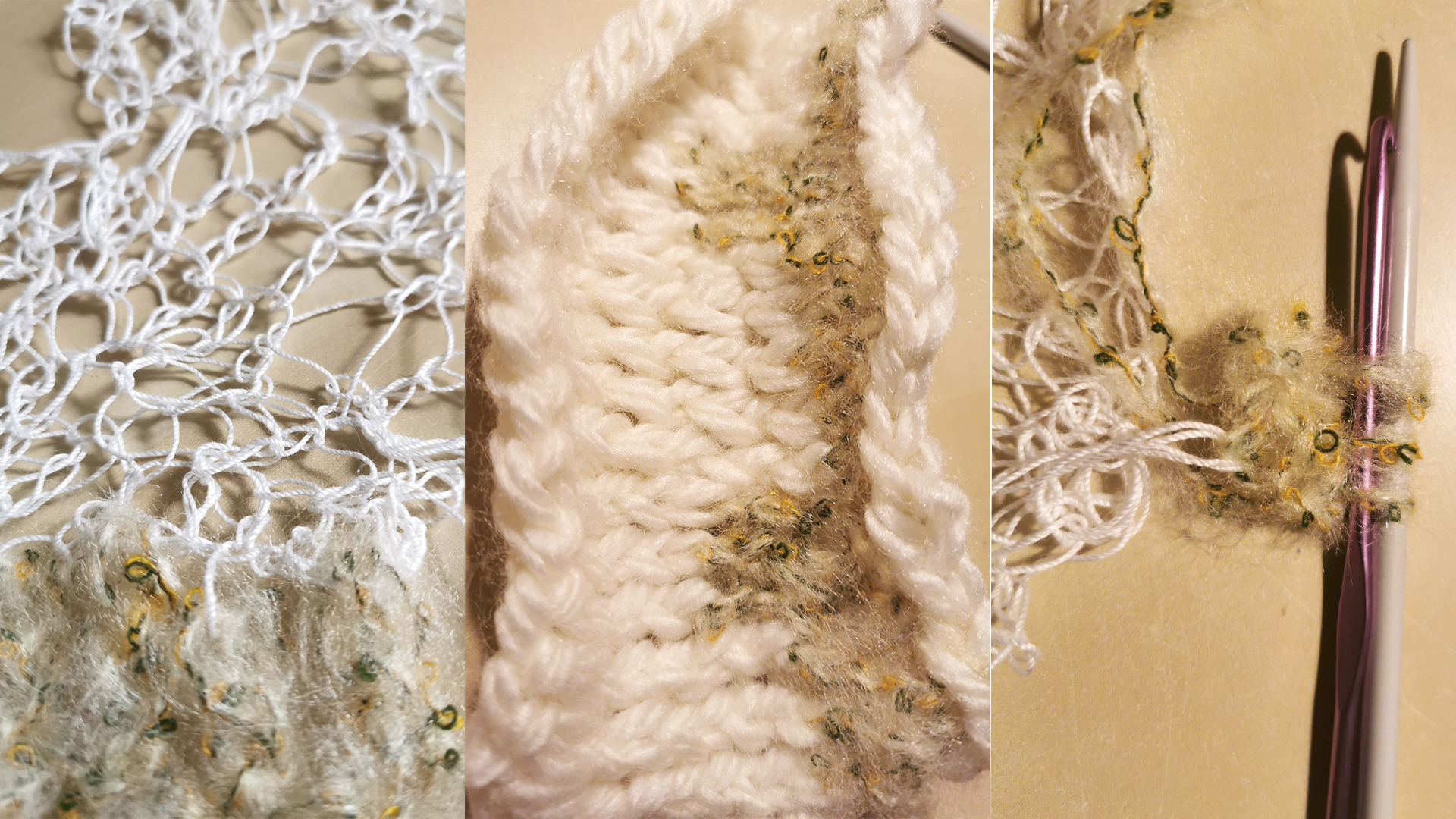 For this sample I made new pieces, inspired by my previous samples. I made random stitch crochet, combining two yarns. As in my previous small crochet sample discussed in my blog before, I made a loose stitch crochet from white fine embroidery thread, but this time bigger size. Later I joined thicket yarn, in order to represent musical transition, from higher note to the lower. I then knitted a small fragment representing musical frequencies. I worked on this idea when I was attaching two pieces together. Showed the graphic images I translated from music, using knit and crochet at once. I knitted on top of crochet and went back to crochet when actually attaching the two small samples together.
For this sample I made new pieces, inspired by my previous samples. I made random stitch crochet, combining two yarns. As in my previous small crochet sample discussed in my blog before, I made a loose stitch crochet from white fine embroidery thread, but this time bigger size. Later I joined thicket yarn, in order to represent musical transition, from higher note to the lower. I then knitted a small fragment representing musical frequencies. I worked on this idea when I was attaching two pieces together. Showed the graphic images I translated from music, using knit and crochet at once. I knitted on top of crochet and went back to crochet when actually attaching the two small samples together.
To balance really fragile construction, I then attached patchwork, which also had a graphic representation of musical frequencies hand stitched on it.
At the end, half planned, half accidentally, the whole sample started to look as a musical stave. It perfectly represented and concluded my collected data and its’ analysis!
Sometimes I am amazed how well different materials work!
Have a closer look:
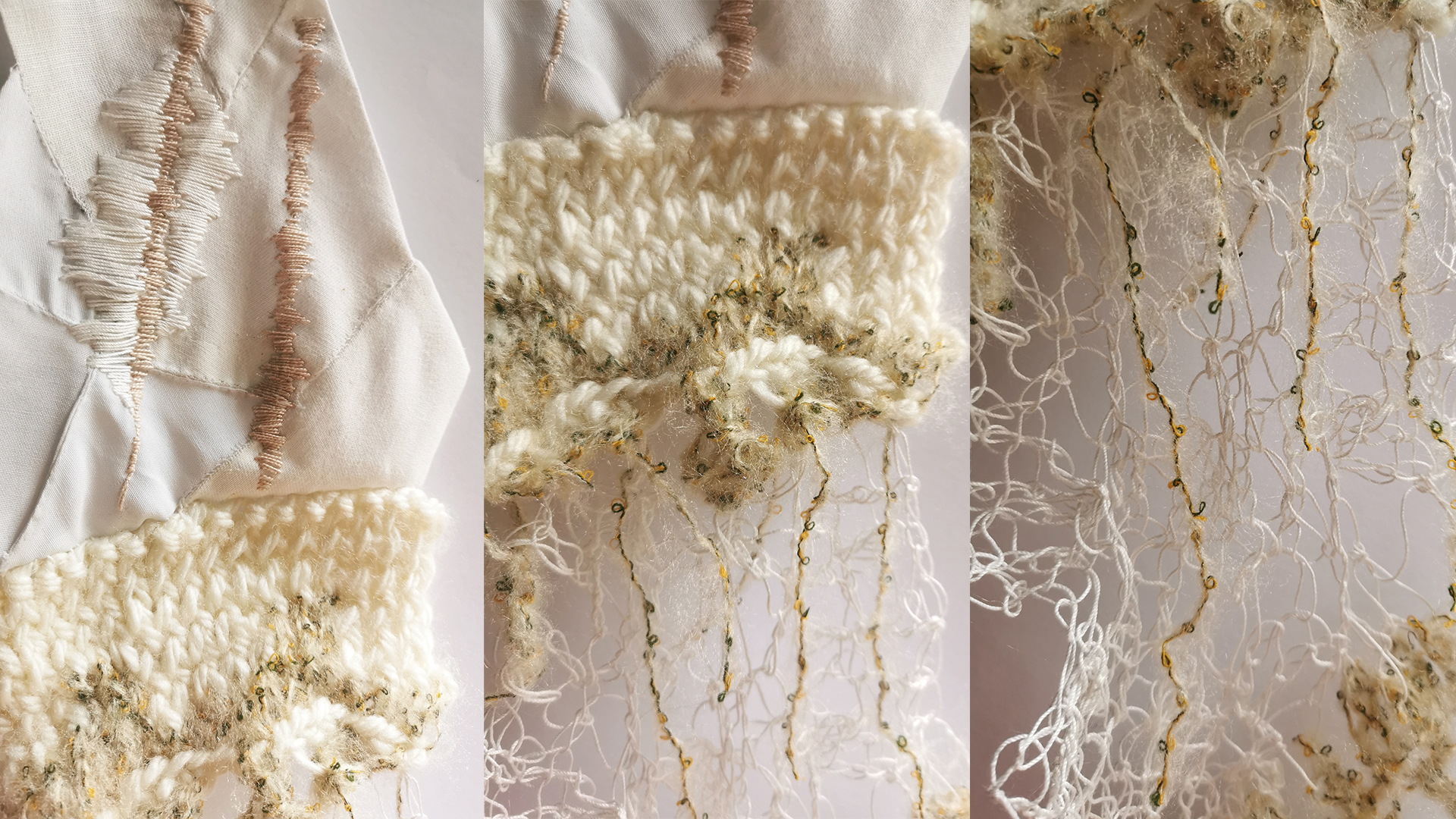
This piece would look so well as a sleeve:
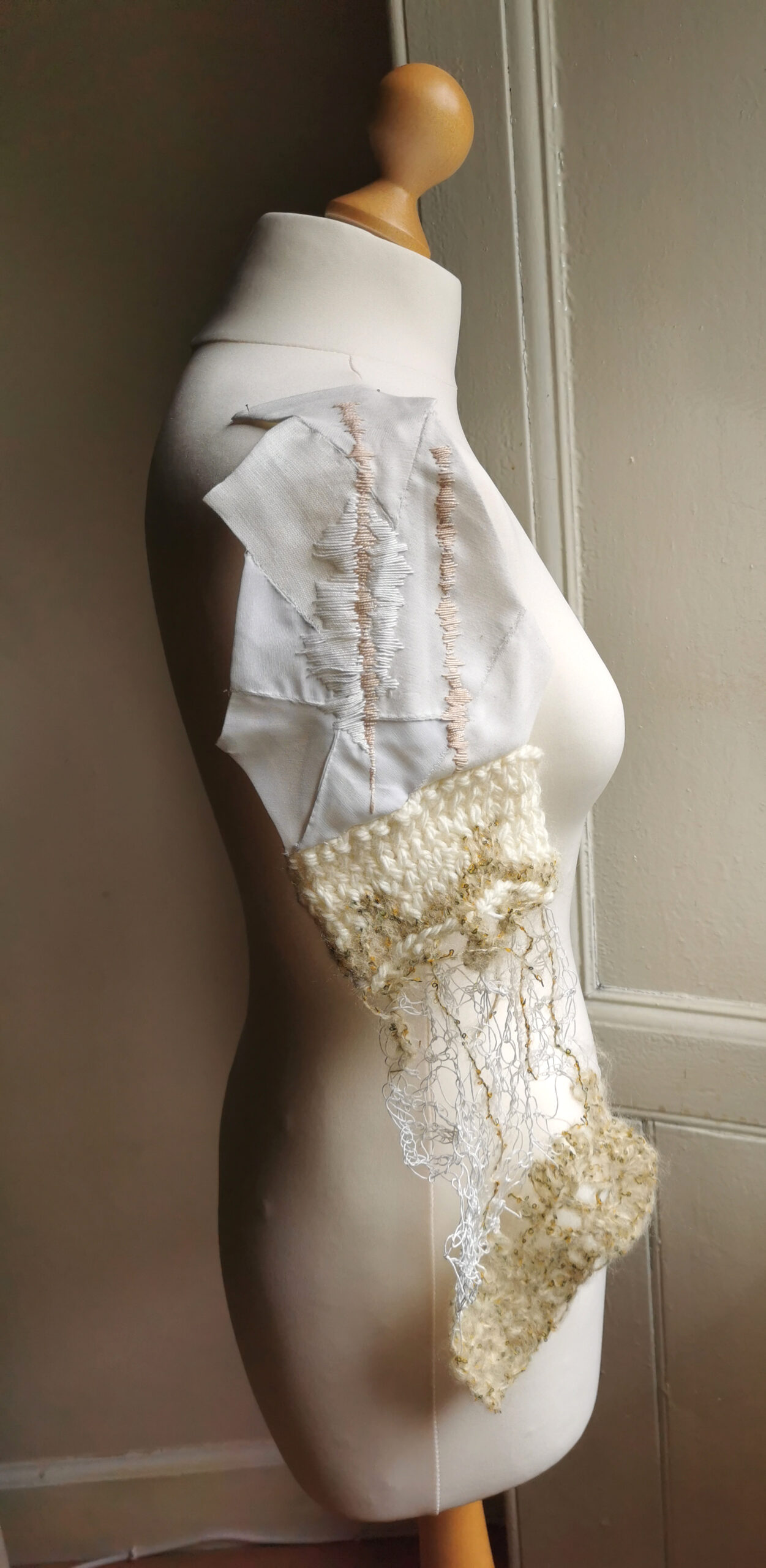
Overall I must say I really enjoyed this project. Usually specialising in print, I discovered totally new horizons in textiles. I would usually avoid talking about the properties of fabrics, having little to none of the knowledge. I can say now, that I have more understanding about the behaviour of different materials. The easiest way is to TRY it out! I went quite crazy, while combining, layering, cutting, removing, attaching and removing again. Due to the fast pace of the project I didn’t plan or think much, therefore really pushed to the limits of my creativity. I trusted fabrics and techniques and my collected data, to lead me.
I am planing to keep working on the project in the future. As my teacher Lindy well advised, I will hopefully try out the CAD embroidery and discover the transition from analog to digital.
Let’s see what the future brings.




These are so gorgeous! x
Thanks very much, Briana! X
Love these – like how you placed these on the bodice too!
The bodice was last minute improvisation.
Thank you so much! X
Beautiful photos to open the post. They are very well lit and promote the lovely contrast in textures of your pieces, well done. That gingery yarn is just stunning, but only so successful due to the fact that you have used is so sparingly and so loosely to show it off. The contrast in the fragility of some element alongside the heavier and closer knit sections is so well considered. Your reasoning for your choices taking into consideration the structural and aesthetic qualities is convincing throughout.